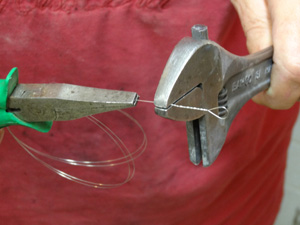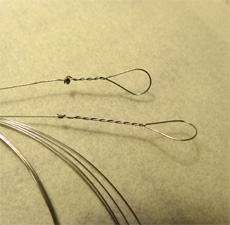FAQ
|
Banjo Tailpiece 5th String Conversion Kit Will it fit my banjo? FAQ Instructions Tailpiece and tone Anders Sterner Contact Prices - Order |
Why would you put the tuning peg on the tailpiece? The fifth string tuning peg is obstructive when you play. You may not think so because you're so used to it - but it is. After removing the peg from the neck, my thumb automatically avoided the non existing peg for about two weeks. And putting a capo on the fifth fret can be a hassle. Why not tunneling the fifth string under the fretboard up to the peghead? That solution causes tuning problems due to 1) the long distance between the peg and the nut, 2) the elasticity of the string and 3) the friction in the tunnel. It is also a very extensive and expensive conversion to make. The beauty with the Sterner 5th String Conversion Kit is that almost any 5-string banjo can be converted in an easy way, without altering the banjo at all and without tuning problems! Isn't it awkward to tune with your right hand? After a little while your right hand will find the tuning peg automatically. Then you don't think about it. But you can't pick the string while you tune and you have picks on your fingers... On the other hand you can fret the first string for comparison while you tune. I would say that tuning the 5th string becomes easier and faster and I have no problem turning the knob with my picks on. Can any 5-stringed banjo be converted? Perhaps not any banjo, but most. Check Will it fit my banjo?. Can you do the conversion yourself? Yes, if you are normally handy. The trickiest part may be the removal of the 5th string tuning peg if it is glued in the neck. Check the Instructions. If you feel uncertain, let a professional repairman do the conversion. Is the tuning peg securely fastened on the tailpiece? You don't want it to pop loose in the middle of a song. Yes, I would say it is securely fastened. Check the Instructions. On open back banjos the tuning peg will be unprotected! Yes, that's right. On resonator banjos the peg is protected by the flange and the resonator. I invite creative open back banjo players to invent some protective attachment that can be fastened by the tension hooks. Let me know what you come up with. The tailpiece is adjustable sideways. Can it be moved by accident? No, it is fixated as hard or harder than any other tailpiece. You have to loosen the strings quite a lot before the tailpiece can be moved. On an ordinary tailpiece the pull from the strings counteract the pull from the fastening screw. Also the contact area between the tailpiece and the tension hoop is small. The Sterner tailpiece is pulled against the mounting hoop by the full force of the string tension and the contact area between the mounting hoop and the legs of the tailpiece is much larger. The winding at the loop end of the string extends over the 5th string nut on my banjo! I solved the problem by making a new loop with a shorter winding, but I thought I'd make you aware of the problem. Other string brands might have shorter winding. As the 5th string is made of plain steel, I don't think there is any noticeable difference in sound between different brands. If the difference in length is small, changing the 5th string nut for a hook (model railroad spike) may solve the problem. 
 Here is an easy way to shorten the winding by sliding it closer to the loop. Use a flat nose pliers and an adjustable wrench.
For my style of playing a heavy tailpiece will give too much sustain... It is a lot easier to remove sustain than adding sustain. If you want less sustain, just put a piece of gaff tape under the bridge on the inside of the banjo head. To increase the sustain further than the Sterner tailpiece will give you, the next step would be to have your banjo intonated really well. The sustain depends to a high degree on the resonance of the overtones in the strings you don't play on! Obviously those overtones resonate easier when the instrument becomes intonated. You can read a lot more about intonation of fretted instruments here: http://www.sternercapo.se/Compensation/index-Eng.HTM (in English) http://www.sternercapo.se/Compensation/index-Swe.HTM (in Swedish) |
|||||